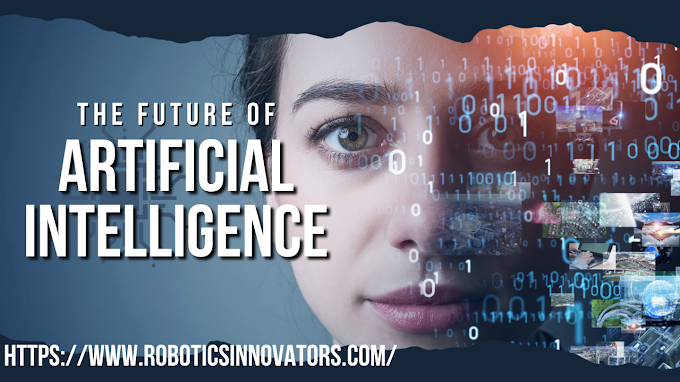The public's distorted perspective on the future of robots is likely mostly the result of pop culture. Robotics may have gained some dazzling mass appeal because of characters like C3PO in Star Wars, Data in Star Trek, and the cyborg in The Terminator, but these representations have also created a limited view of what robots could be capable of in the future.
Professor of robotics at the University of Washington in Seattle, Blake Hannaford, declared, "I'm never going to rule anything out. But when you compare science fiction from the 1950s and 1960s to what is available now, it truly falls short.
Robots have defied human expectations, for better or worse. It's doubtful that killer robots akin to Arnold Schwarzenegger will appear very soon, but even so,
How do robots work?
Let's start by going over some fundamentals. Robotics is the practice of creating machines that perform physical activities for people and may be somewhat autonomous. Because of its multidisciplinary character, the field intersects with disciplines including engineering, computer science, and artificial intelligence.Although robots on television and in movies frequently exhibit human characteristics, the science of robotics includes everything from humanoid machines to robotic arms that work in an assembly line. Major surgeries, rescue missions, and climate research are already being helped by robots. Although robots perform a variety of functions, there are several traits that bring them all into the same category.
How do robots work?
A robot is a machine that carries out duties that are usually done by people. Different robots have varied levels of automation, but they should all be able to do a specific set of duties independently. These fundamental characteristics are shared by all robots:Robots have a mechanically constructed physical form.
All robots need an electric current to drive their actions and choices, whether it comes from batteries or internal circuitry.
Robots are controlled by programming software and regulations, which enable them to carry out tasks and occasionally reach independent judgments.
Robotic Types
Although the robotics ecosystem is constantly evolving, several robot kinds continue to be the most common. The primary types of robots, which range from chatbots to humanoids, are listed here.
READY-TO-RUN ROBOTS
Robots that have been pre-programmed get instructions beforehand and are unable to alter their behavior while carrying out an action. These robots are best used to carry out a single, repetitive duty.
HUMANITARIAN ROBOTS
Robots that resemble humans in terms of appearance and even facial emotions are called humanoids. They are well suited for service positions that demand direct human contact due to their likeness to humans.
AUTOMATIC ROBOTS
Robots that operate autonomously are able to act and decide on their own. These robots rely on sophisticated computers to observe and assess their environment.
TELESCOPICAL ROBOTS
Through a wireless network like Wi-Fi, a human operator may remotely control teleoperated robots. They are perfect for carrying out dangerous tasks in hazardous locations.
IMPROVING ROBOTS
Robotic augmentations work in tandem with the human body to enhance existing skills or restore lost ones. People's quality of life has increased as a result of examples like artificial legs.
Software bots are computer programs that depend on coding to carry out tasks automatically. These bots aren't considered robots because they solely live online or on computers.
Benefits and Drawbacks of Robots
The conversation about robots is complex, inspiring both optimism and dread in various people. Robotics will undoubtedly continue to change society, but it is unclear how this will affect people.ROBOTIC PROPERTIES
There are numerous reasons to be positive about robots, including further developments in other industries and the possibility of human beings performing more fascinating, highly skilled occupations.Rising Innovation
Due to its multidisciplinary character, robotics frequently results in advancements in other disciplines. Robots require a lot of computing power, and that power is growing, which has improved many different technologies. For instance, a smartphone nowadays can complete more tasks and last longer on the same amount of battery life. With the aim of enabling robots to better assemble and learn from visual data, more effective computing power has also enabled computer vision and natural language processing to make significant progress.As businesses drive for more intelligent robots, programmers will need to produce more sophisticated
Additional Support
While some employees see robots as a substitute for their jobs, many workers are discovering that robots are fantastic additions to their workplaces. Cobots, or collaborative robots, have emerged to take on routine, repetitive tasks that don't require much mental effort from the normal person. Cobots conduct audits and spot fraud in the financial sector, freeing up staff to devote more time and effort to challenging initiatives.
Businesses may increase productivity and revenues by using robots to help their staff and clients.
New Career Possibilities
Although the arrival of robots will change the nature of work, the elimination of some positions also leaves room for higher-level positions. Companies still need to hire software engineers and other tech specialists who understand how to maintain robotics technology for every worker that a robot replaces. In this sense, one could contend that robots have replaced dull employment and opened the door for new, better ones.Robotics also offers a fantastic opportunity for businesses that are experiencing a labor shortage to modernize their processes. Robots may be used by businesses to automate activities, train staff on new technology, and offer them more time to relax and use their energy as needed.
CONTRAINS OF ROBOTS
Realistic concerns have been voiced because robotics has changed and will continue to change how people live and work, and not all of these changes are for the better.Security and privacy concerns
Robots have been at odds on where to establish borders in the past. A variety of possible security risks are associated with AI and robots, including the ability to conduct surveillance, run social engineering tricks, and even launch violent assaults.A robot catastrophe, such as a drone colliding with an airliner, would be another nightmare scenario for commercial and political leaders. Even if these are worst-case scenarios, the industry could require more rules to guarantee that robots are used in a safe and morally upright way.








.jpg)




